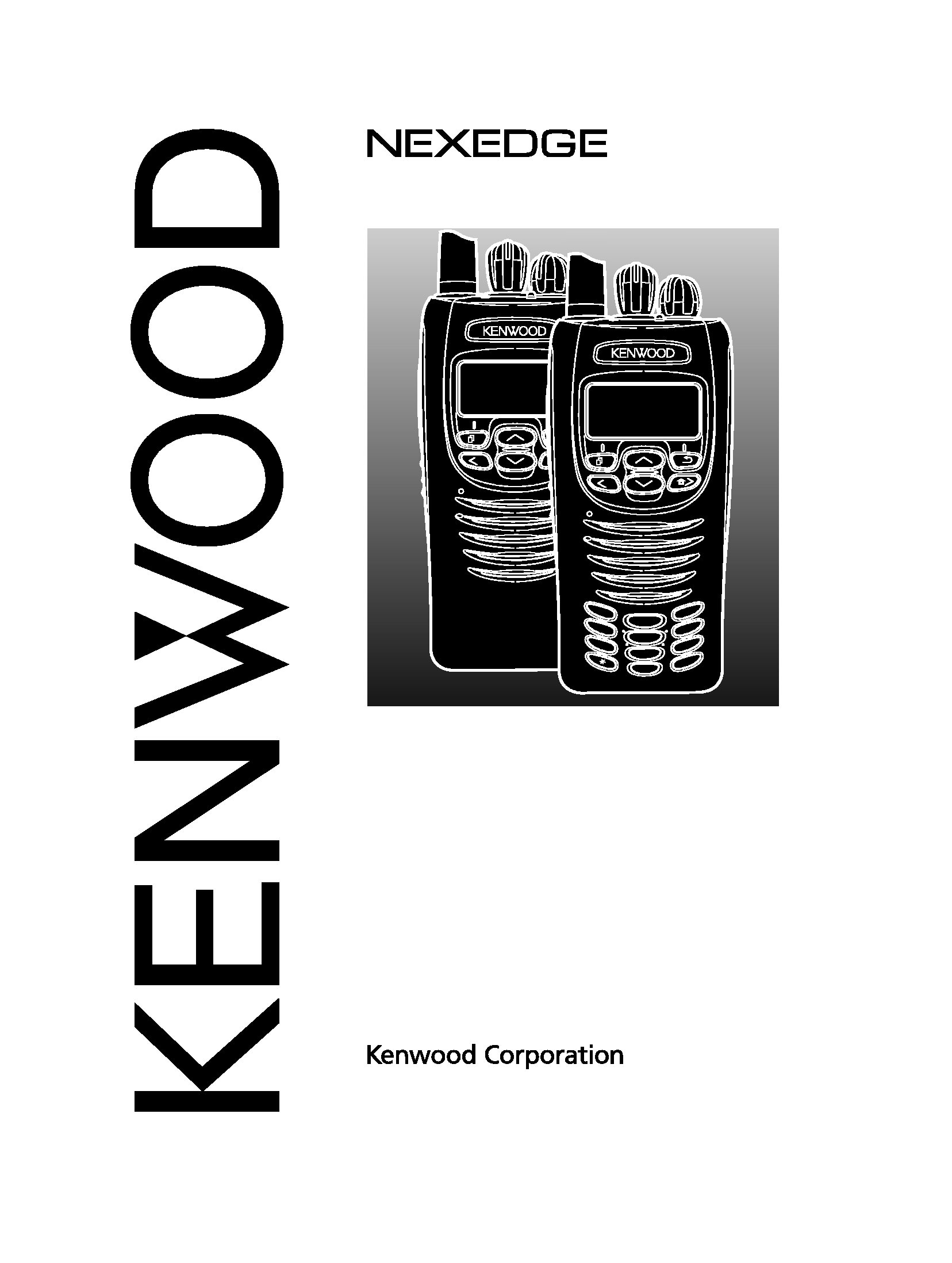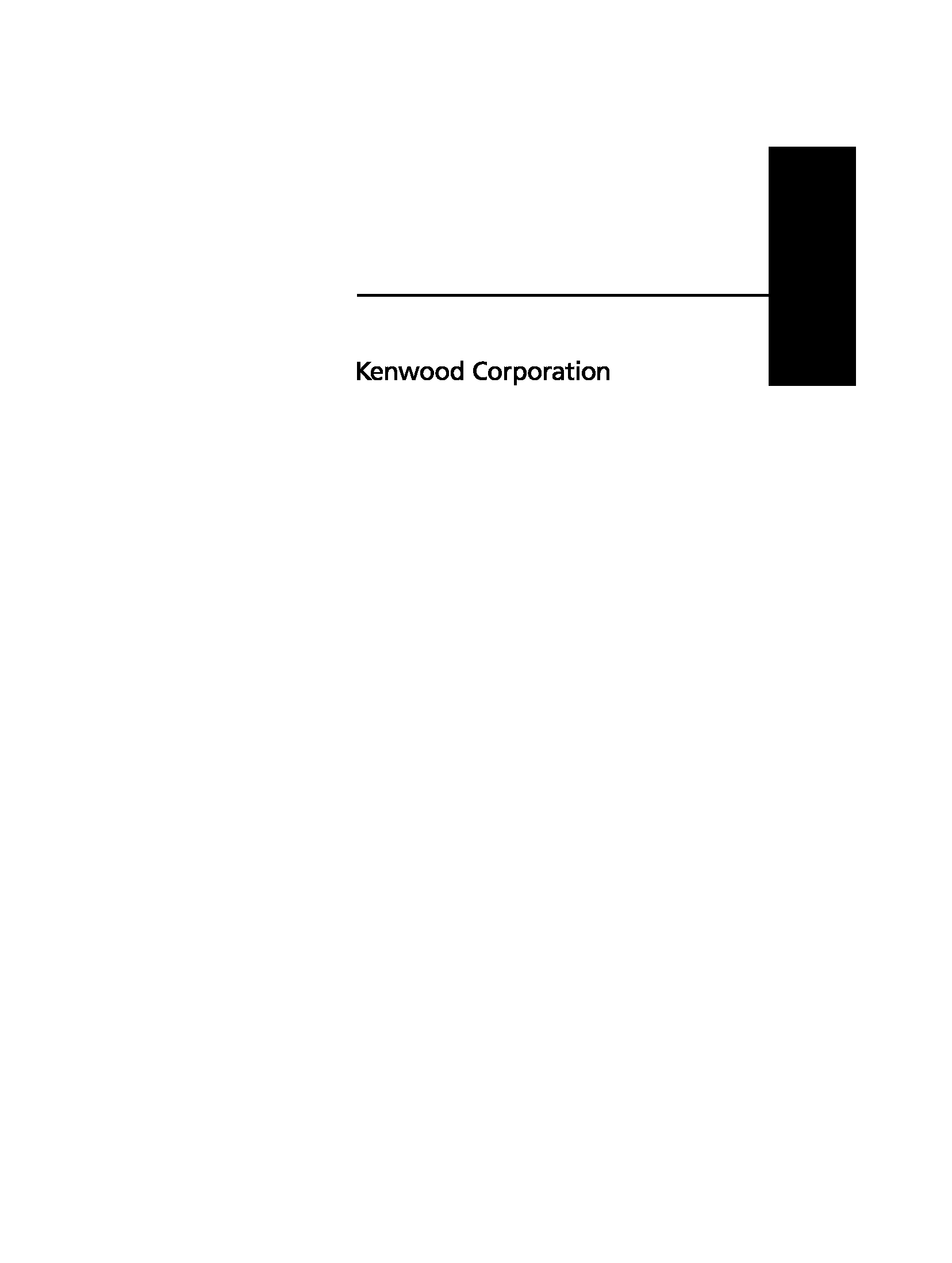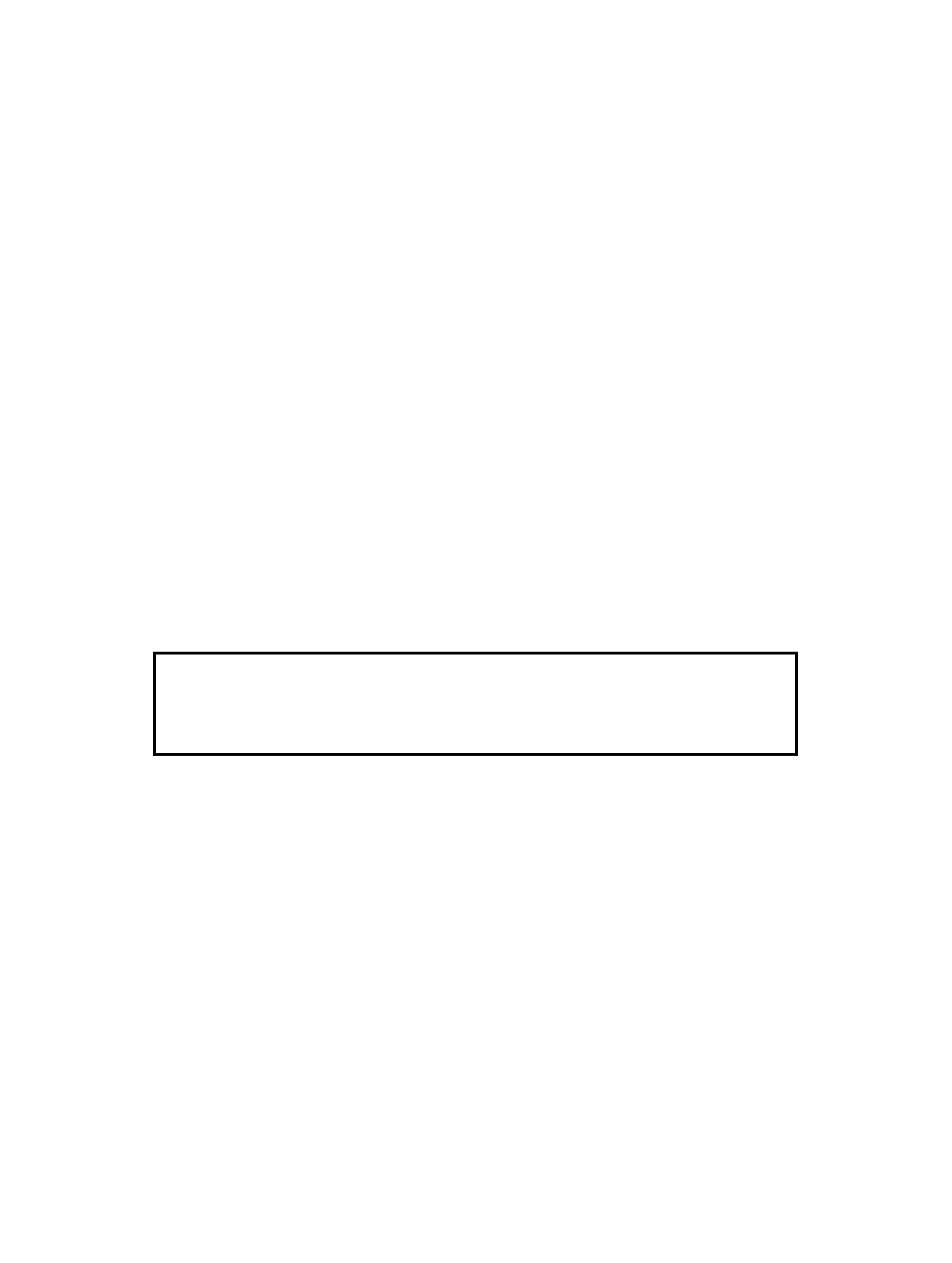
© B62-2014-00 (K,K2,K3,K4)
09 08 07 06 05 04 03 02 01 00
NX-200/ NX-300
VHF DIGITAL TRANSCEIVER/
UHF DIGITAL TRANSCEIVER
INSTRUCTION MANUAL
ÉMETTEUR-RÉCEPTEUR NUMÉRIQUE VHF/
ÉMETTEUR-RÉCEPTEUR NUMÉRIQUE UHF
MODE D'EMPLOI
TRANSCEPTOR DIGITAL VHF/
TRANSCEPTOR DIGITAL UHF
MANUAL DE INSTRUCCIONES
MIC
MIC
2 ABC
5 JKL
0
8 TUV
4
7PQR
S
3 DEF
6 MNO
#
9 WXYZ
1
GHI
NX-200-300_00_Cover.indd F-1
NX-200-300_00_Cover.indd F-1
9/20/2007 9:29:18 AM
9/20/2007 9:29:18 AM

VHF DIGITAL TRANSCEIVER/
UHF DIGITAL TRANSCEIVER
NX-200/ NX-300
INSTRUCTIoN MANUAL
ENGLISH

Thank You
We are grateful you have chosen Kenwood for your land
mobile radio applications. We believe this easy-to-use
transceiver will provide dependable communications to keep
personnel operating at peak efficiency.
Kenwood
transceivers incorporate the latest in advanced
technology. As a result, we feel strongly that you will be
pleased with the quality and features of this product
NXDNTM
NXDNTM is a protocol name for the new digital communication
system using 4-level FSK technology which has been co-
developed by Kenwood and Icom.
Models Covered bY This Manual
The models listed below are covered by this manual:
NX-200:
VHF Digital Transceiver
NX-300:
UHF Digital Transceiver
noTiCes To The user
Government law prohibits the operation of unlicensed radio
transmitters within the territories under government control.
Illegal operation is punishable by fine and/or imprisonment.
Refer service to qualified technicians only.
SAFETY
: It is important that the operator is aware of and
understands hazards common to the operation of any
transceiver.
The AMBE+2TM voice coding Technology embodied in this product
is protected by intellectual property rights including patent rights,
copyrights and trade secrets of Digital Voice Systems, Inc. This
voice coding Technology is licensed solely for use within this
Communications Equipment. The user of this Technology is
explicitly prohibited from attempting to extract, remove, decompile,
reverse engineer, or disassemble the Object Code, or in any other
way convert the Object Code into a human-readable form. U.S.
Patent Nos. #5,870,405, #5,826,222, #5,754,974, #5,701,390,
#5,715,365, #5,649,050, #5,630,011, #5,581,656, #5,517,511,
#5,491,772, #5,247,579, #5,226,084 and #5,195,166.

One or more of the following statements may be applicable:
FCC WARNING
Ths equpment generates or uses rado frequency energy.
Changes or modfcatons to ths equpment may cause harmful
nterference unless the modfcatons are expressly approved n the
nstructon manual. The user could lose the authorty to operate ths
equpment f an unauthorzed change or modfcaton s made.
INFORMATION TO THE DIGITAL DEVICE USER REQUIRED BY
THE FCC
Ths equpment has been tested and found to comply wth the lmts
for a Class B dgtal devce, pursuant to Part 15 of the FCC Rules.
These lmts are desgned to provde reasonable protecton aganst
harmful nterference n a resdental nstallaton.
Ths equpment generates, uses and can generate rado
frequency energy and, f not nstalled and used n accordance
wth the nstructons, may cause harmful nterference to rado
communcatons. However, there s no guarantee that the
nterference wll not occur n a partcular nstallaton. If ths equpment
does cause harmful nterference to rado or televson recepton,
whch can be determned by turnng the equpment off and on, the
user s encouraged to try to correct the nterference by one or more of
the followng measures:
·
Reorent or relocate the recevng antenna.
·
Increase the separaton between the equpment and recever.
·
Connect the equpment to an outlet on a crcut dfferent from
that to whch the recever s connected.
·
Consult the dealer for techncal assstance.
The RBRC Recycle seal found on
Kenwood
lthum-on (L-on) battery packs ndcates
Kenwood's voluntary partcpaton n an ndustry
program to collect and recycle L-on batteres
after ther operatng lfe has expred. The RBRC
program s an alternatve to dsposng L-on
batteres wth your regular refuse or n muncpal
waste streams, whch s llegal n some areas.
For nformaton on L-on battery recyclng n your area, call (toll
free) 1-800-8-BATTERY (1-800-822-8837).
Kenwood's nvolvement n ths program s part of our commtment
to preserve our envronment and conserve our natural resources.

Precautions
·
Do not charge the transcever and battery pack when they are wet.
·
Ensure that there are no metallc tems located between the
transcever and the battery pack.
·
Do not use optons not specfed by
Kenwood.
·
If the de-cast chasss or other transcever part s damaged, do not
touch the damaged parts.
·
If a headset or headphone s connected to the transcever, reduce
the transcever volume. Pay attenton to the volume level when
turnng the squelch off.
·
Do not place the mcrophone cable around your neck whle near
machnery that may catch the cable.
·
Do not place the transcever on unstable surfaces.
·
Ensure that the end of the antenna does not touch your eyes.
·
When the transcever s used for transmsson for many hours, the
radator and chasss wll become hot. Do not touch these locatons
when replacng the battery pack.
·
Do not mmerse the transcever n water.
·
When water gets nto the mcrophone openng or the speaker
grll, the voce level may become ncoherent or dstorted. Lghtly
shake the transcever to remove the water from the speaker and/or
mcrophone before operatng the transcever.
·
Always swtch the transcever power off before nstallng optonal
accessores.
